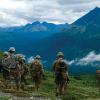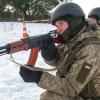From terrorism to cyberwarfare to fighting “by, with and through” coalition partners, the past 16-plus years of armed conflict have forced the Army to change. Much of this evolution has involved new hardware such as Predator drones, precision guided munitions and Stryker combat vehicles, but the Army has also grown increasingly reliant on contracted service and support to move, house and sustain its formations.
By way of illustration, the Pentagon reported in January that more than 46,000 contractors support the U.S. military in the U.S. Central Command area of responsibility, with most of them...



















